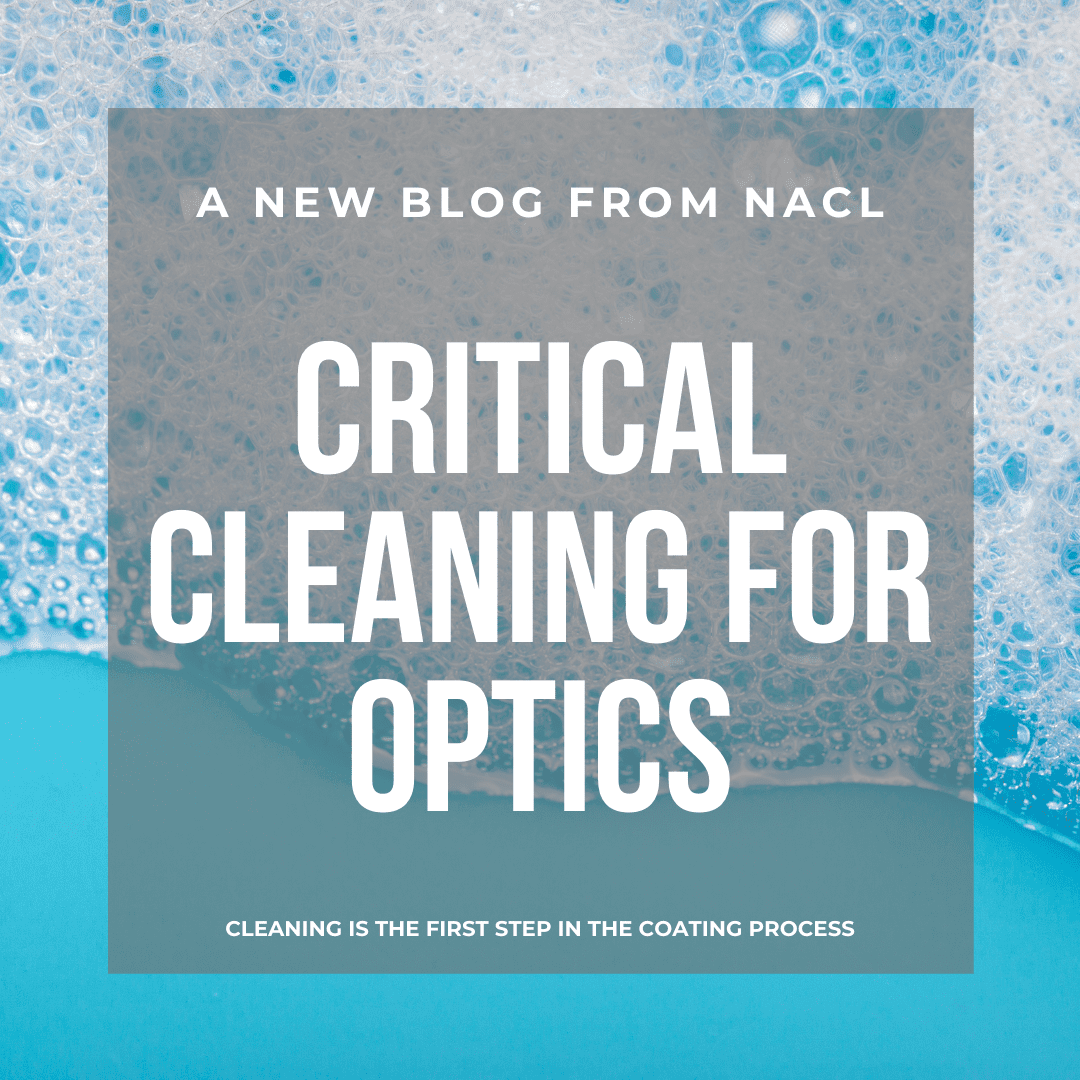Critically Cleaning Optical Elements Prior to Coating
As we begin a new year, many people have resolved to clean up their homes and “de-clutter” so they are organized to start the year on a good foot.
In the optical coating world, we also take our cues from famous organizing consultant, author, and Netflix TV show host Marie Kondo because nothing sparks less joy for our customers than a dirty optic!
Once we receive optical lenses, we perform a critical inspection and then will make a few decisions as to how to proceed with preparing optics for coating.
If the optic is robust and can tolerate temperatures and frequencies, the most surefire way to critically clean an optical element is with a aqueous, robotically driven, ultrasonic cleaning system. These systems offer a repeatable automated process that exposes the element to a predetermined level of ultrasonic frequencies, surfactants, and exposure times to each. Additionally, these systems are equipped in many cases with closed loop filtered water for ultra-purity. Some systems will also provide the ability to barcode each basket or traveler so that the precise factors such as time, temperature, sonic frequencies, and surfactant levels are all recorded for a fully traceable process that can be researched in the case that there is unexplained fallout.
In some instances where the optical material is sensitive to heat, pressure, or different types of surfactants, less aggressive means of cleaning are sometimes selected. These methods include hand cleaning. Hand cleaning sounds pretty simple, almost like washing dishes. But because these are expensive and delicate optics there is definitely more of a precise method to hand cleaning optical elements. A frequently used cleaning method is to slowly drag a single sheet of lens tissue, soaked with a drop of a non-aggressive surfactant, once across the optical surface, holding the tissue only at the sides without applying additional pressure. If the drop-and-drag method is not effective, carefully wiping the surface with light pressure, using layers of clean room lens tissue may be necessary. Only the fold of the surfactant-soaked tissue makes contact with the optical surface. This method is used when we must avoid touching the optical surface at all costs such as the case with highly polished laser mirrors.
If the surface is slightly more forgiving cleaning is possible by wiping the surface with folded tissue held between your operators gloved fingers applying some more pressure. Keep in mind that the more aggressive the cleaning technique the higher your risk of damage is.
Once the optic is deemed clean, regardless of method, the next step is to blow off the optic to be make 100% certain that there is no airborne particulate on the surface. This is extremely important, because even a small fleck of dust can create a pinhole and ruin a perfectly suitable coating run. It is recommended that you perform the blow off of the optical surface with compressed and filtered air or nitrogen.
At this point, you may think the cleaning process is completed once the parts are loaded into the coating chamber and the door is closed. That is not the case in some instances. In chamber cleaning procedures also exist that clean parts at an atomic level or actuate surface energy to help increase the films adhesion to the raw substrate. One in chamber method for cleaning in situ is ion-beam pre-cleaning. In an ion preclean scenario, low ion energies cover a large area of your chamber including where the substrates are mounted. The beauty of this process is that it has a low probability of damaging the surface. Other cleaning methods include plasma discharge cleaning which is a high voltage and high energy ion bombardment process but may require significant substrate cooling.
Using these methods before you coat your optics, you too can “spark joy” for your customers and provide perfectly clean and coated optics each and every time.






